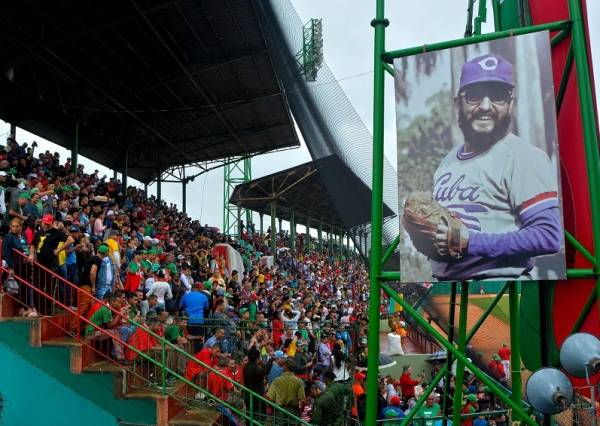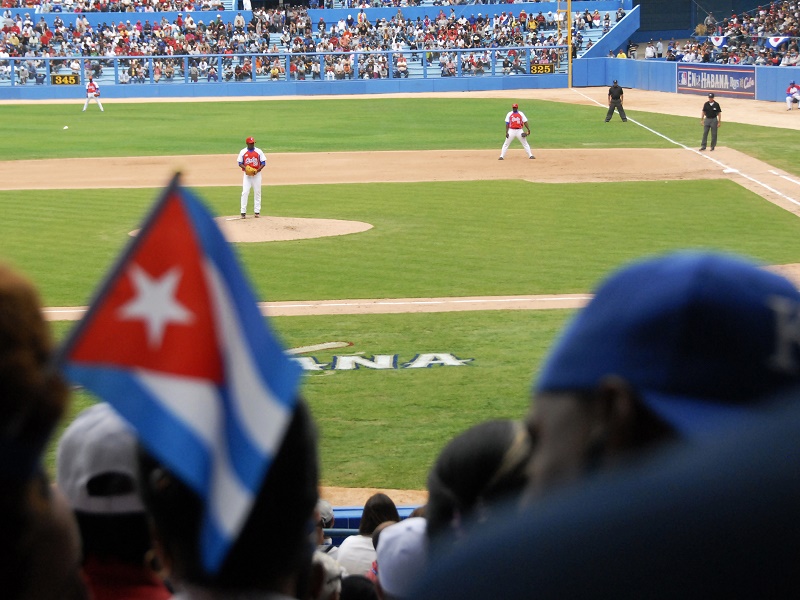None of the 15 demonstrations expressed the extent to which the nation’s cultural heritage in Cuba had anything to do with sport. There are few immaterial expressions of this kind in the world that deserve such conditions. So, what will happen on Tuesday at Palmar de Junco is an almost unprecedented game.
Two years after the start of the declaration process, this October 19 can be understood as the last one for those who carried out the investigation and created the file. The completion of his victory, which will be celebrated with the same championship spirit, and in the center of the football field, is not just anywhere, but the most active in the world.
For others, the game starts now. It will return to its roots, to the great and primeval times. Facts, beyond formal rubrics or declarations, invite us to read the history of our national sport and its protagonists, and put them in context.
In its cultural dimension, the game of ball, the knowledge and practice associated with it, is a legacy that is part of Cuban spirituality, even of those who usually don’t go to stadiums or don’t follow baseball series, but when they play. off or international tournaments they don’t want to be stuck “off base” or put “in threes and twos”.
At a time when competitive results weren’t the best, and Cuba was losing more than winning, a patrimonial anointing arrived, the kind of bat that hit a home run in the ninth inning to put his team in the game.
Our baseball was born and grew up in alliance with music, humor, painting, popular culture as well as the smell of jungles of redemption and patriotic conspiracies, arguments that give prestige among the ingredients with which Cuban identity has been cooked. (See Baseball Deserves to Be a National Cultural Heritage, Issue 4 December 2019.)
Now, elevated to a greater symbolic dimension, placed on the altar of cultural expression protected by the National Heritage Council, our baseball has another point of support for turning markers reflecting recent events between the two chalk lines.
According to María Teresa Blanco Santos, National Heritage Council (CNP) specialist, the declaration ensures legal protection by the institution, and provides more recognition and visibility, while promoting a greater sense of belonging among those who practice it as well as by them. responsible for looking after it. “This makes us committed to continuing to protect Cuban baseball and working for its sustainability over time,” he asserted.
This is an opportune time to accompany the declaration with the institutionalization of the Cuban Baseball Museum and Hall of Fame, conceived as a living and enriching project that demonstrates to a new generation the history of the sport that has given us so much sparkle, on and off our borders.
More than living from past glories, our sphere, which is now a cultural asset of the nation, deserves a national convention that puts all possible knowledge into dialogue. There is so much to tell, confront, legitimize; to think and imagine together.
Faced with the media challenges imposed by globalized football and the political plots of those who reject socialism to deprive us of the success of our premier sports-culture show, Cuban baseball has the opportunity to respond intelligently, rethink and renew itself.
This is not, as the declaration rightly states, a strict sporting problem and its solution cannot come only from the playing field, or from those who manage or administer baseball.
Like Cuba, which got rid of old and unsustainable practices, our national sport must show its best tools to win this game, not arbitrarily negating possible rivals, but from its symbolic and spiritual essence, which makes this game a unique spectacle. , even in times of little competitive prosperity.
Historians will continue their controversy about the founding date; fans will discuss the next champion; the press will focus on those selected for Cuba or the National Series structure…
However, this October 19th, we will all make a truce in boundless controversy, to attend a brief but inspiring event, at a unique venue in Matanzas where playing ball is starting to become common, which is now as Cuban as Anglo-Saxon.
Hopefully Tuesday’s lift will serve to keep the ball alive and in play. The same on the ground, as in the hearts of the Cubans.
Baseball is a legacy that is part of Cuban spirituality.Photo: Athe bell of Rojas Barallobre
What is cultural heritage?
According to the 2003 UNESCO convention, the uses, representations, expressions, knowledge and techniques – together with the instruments, objects, artifacts and cultural spaces attached to them – are recognized by communities, groups and in some cases individuals as an integral part of their cultural heritage. .
This intangible cultural heritage, which is passed down from generation to generation, is continually being recreated by communities and groups based on their environment, their interaction with nature and their history, uniting them with a sense of identity and sustainability, and thereby helping to increase respect for cultural diversity and human creativity.
They manifest themselves mainly in:
Oral traditions and expressions, including language as a vehicle for intangible cultural heritage.
Dramatic Arts.
Social uses, rituals and festive acts.
Knowledge and usefulness relating to nature and the universe.
Artisanal and traditional techniques.
???????? Francisco Soriano Bermúdez, National Award for Sports Journalism 2019 sent us his considerations, from #Matanzasconcerning the declaration of baseball as a National Cultural Heritage. #CubanBaseball #Cuban CultureDay #Cuba
????️ @Mikelesphoto / @noroseng pic.twitter.com/7P2tUR0KgO– Rebel Youth (@JuventudRebelde) October 14, 2021
Cuban Intangible Manifestations Declared as National Cultural Heritage
- Three (2011)
- Rumba (2012)
- Suddenly (2012)
- Son (2012)
- Tobacco Shop Reading (2012)
- Paranda from the central region of Cuba (2013)
- Danzon (2013)
- Santiago de Cuba Carnival (2015)
- Charangas from Bejucal (2015)
- Rum Masters Knowledge (2016)
- Eastern Organ (2017)
- Changüi (2018)
- Cuban Creole Cuisine (2019)
- Majagua Blue and Red Side Party (2020)
- The Bolero (2021)
- Dimensions of baseball culture: ball game, related knowledge and practice.

“Amateur analyst. Zombie geek. Hardcore troublemaker. Internet expert. Incurable twitter fanatic.”







/origin-imgresizer.eurosport.com/2024/07/19/image-81ba7137-ae78-47b8-828f-3ab476be8434-85-2560-1440.jpeg)